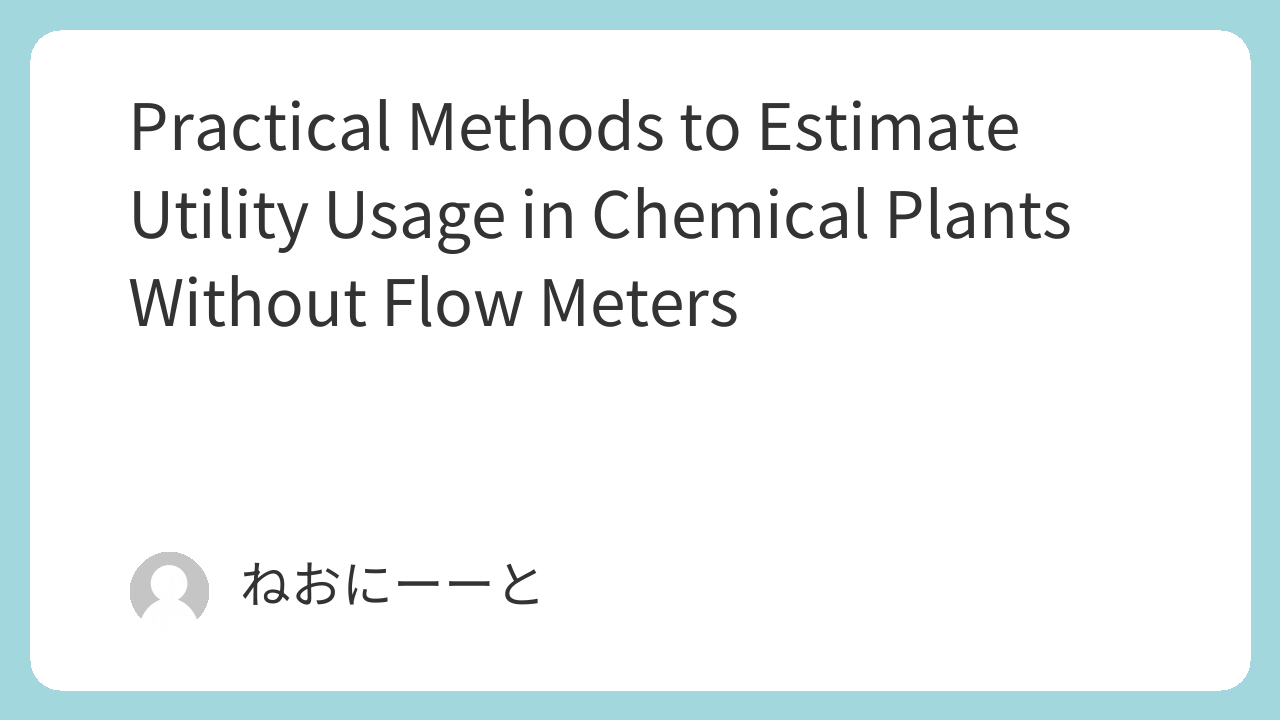In chemical plants, utilities such as water, steam, air, nitrogen, and electricity are as essential as raw materials. While process flows are often meticulously monitored, utility consumption is frequently overlooked—especially when there are no flow meters installed. This oversight can impact plant performance, cost efficiency, and even new project planning. This article introduces practical, easy-to-apply methods to estimate utility usage without expensive instrumentation, helping engineers make informed decisions.
Understanding Cost Estimates in Plant Design: A Simple Example for Beginners
How to Quickly Estimate Pipe Lengths in Chemical Plants | Practical Tips for Engineers
From Estimates to Reality: Making Reliable Budgets for Plant Equipment Purchases
Six-Tenths Rule: Estimate Equipment Cost Easily (with Example)
Lang Factor Explained: A Simple Way to Estimate Chemical Plant Costs
Why Vortex Flow Meters Are the Best Choice for Steam in Chemical Plants
Where Rotameters Work Best in Chemical Plants: Practical Use Cases for Engineers
1. Water
Covers industrial water and cooling water not used directly in the process.
- Batch operations:
Usage = Tank volume (m³) × Replacement frequency (times/day) - Continuous flow:
Usage = Inflow rate (m³/h) × 24 h/day
2. Jacket Water
Used in reactors or heat exchangers. For batch operations, estimate usage during water replacement (e.g., switching between hot and cold water).
- Usage = Jacket capacity (m³) × Replacement frequency (times/day)
3. Cooling Tower Makeup Water
Evaporation losses require constant replenishment. A simplified estimation:
Makeup water (m³/day) ≈ (5°C × Circulating water flow) / 500 × 2
4. Seal Water
Mechanical seals can consume significant amounts.
- Example: 2 L/min × 60 × 24 / 1000 ≈ 2.8 m³/day per seal
5. Steam
Should be monitored directly, but if not:
- Heating: Specific heat × Volume × Temperature difference
- Vaporization: Latent heat × Evaporation amount
Consider steam trap leaks at ~5 kg/h each.
6. Compressed Air
Hard to measure without a dedicated system. Approximate based on actuator size, frequency, or compressor capacity.
7. Nitrogen
- Continuous seal: ~20 NL/min per tank
- Line blow: Based on pipe volume and pressure
- Purging: Tank volume × Purge frequency
8. Electricity
Focus on high-capacity and long-running motors. Estimate by:
Motor power (kW) × Units × Operating hours
Conclusion
Even without flow meters, having a logical, data-backed estimate of utility usage is far better than relying on guesswork. These simplified calculations can help optimize operations, plan new facilities, and identify areas for cost savings. In chemical engineering, small improvements in utility management can yield substantial long-term benefits.

Comments